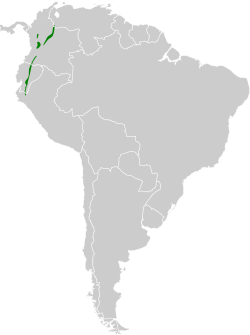| Pseudospingus | |
|---|---|
 | |
| Black-headed hemispingus (Pseudospingus verticalis) | |
| Scientific classification | |
| Kingdom: | Animalia |
| Phylum: | Chordata |
| Class: | Aves |
| Order: | Passeriformes |
| Family: | Thraupidae |
| Genus: | Pseudospingus Berlepsch & Stolzmann, 1896 |
| Type species | |
| Dacnis xanthophthalma Taczanowski, 1874 | |
| Species | |
See text | |
Pseudospingus is a genus of warbler-like birds in the tanager family Thraupidae. They are found in highland forests in South America.



